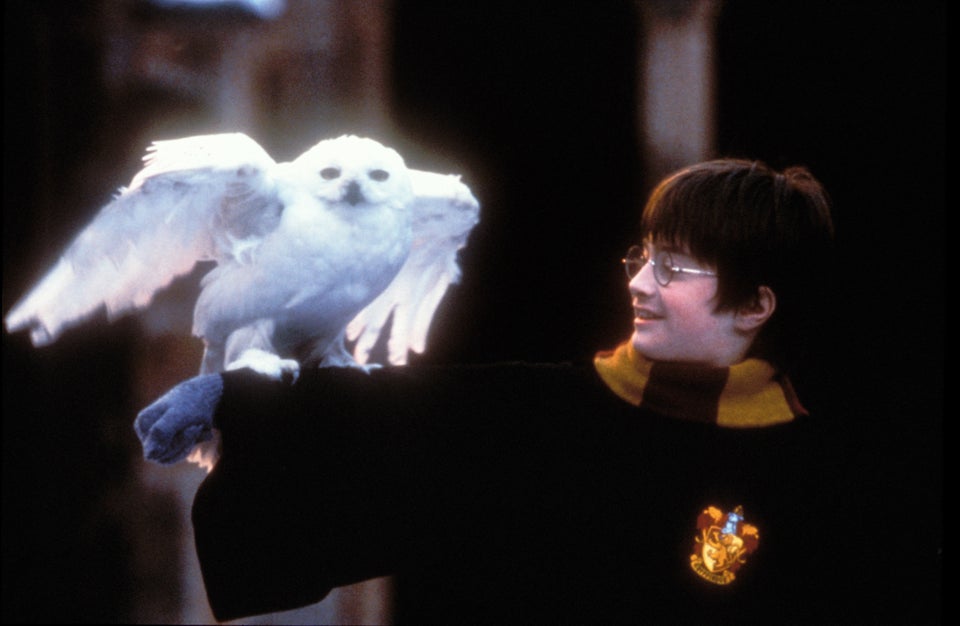Disclaimer: Before my mentions are flooded with angry memes of McGonagall side-eyes and Ron Weasley telling me to sort out my priorities, let’s get one thing clear. Of course, the “Harry Potter” book series is infinitely better than the film adaptations, but that doesn’t mean we can’t appreciate things the movies did pretty well, OK?
With a collective 4,224 pages spanning seven internationally beloved installments, adapting the “Harry Potter” saga for the big screen is a challenge that would make even the most fearless wizard nervous. Few texts in recent memory have been as fiercely protected by its fans, as J.K. Rowling’s world of witchcraft and wizardry won over a generation of young readers who simply couldn’t get enough. Seriously, if given the opportunity, Dumbledore would probably be like, “Eh, pass. Too risky.”
But from the beginning, the series always seemed primed for the big screen with its fantastical settings and climactic action sequences, not to mention the potential payday that could fill multiple bank vaults at Gringotts. With the development in film technology and, of course, Rowling’s permission, Harry, Ron and Hermione were lifted from the page and onto the screen in 2001 with “Harry Potter and the Sorcerer’s Stone.” The wildly successful opening launched a decadelong franchise that brought the magic to the audiences with varying degrees of success, ranging from outstanding (”Prisoner of Azkaban”), exceeds expectations (”Deathly Hallows”) and poor (”Half-Blood Prince”).
So in honor of the 20th anniversary of the first “Harry Potter” book, let’s revisit how the movies expanded on the brilliance of J.K. Rowling’s world and even *gasp* made it better.
1. Kids Just Being Kids
The students of Hogwarts School of Witchcraft and Wizardry were busy. Busy with exams, learning how to apparate without losing a limb, and, oh yeah, the looming threat that the world’s most dangerous wizard might attack the premises at any given moment. With mythology and the prophecies driving the story, oftentimes it was easy to forget that Harry, Ron and Hermione were literally preteens in the first book. Twelve-year-old you could have never.
The films, especially “The Prisoner of Azkaban,” added small touches like modernizing the wardrobe and adding original scenes, to remind audiences that these characters are just kids at the end of the day despite the very adult tasks they faced.
A small but telling example that demonstrates how the books and movies differ in approach is when the Gryffindor boys experiment with candy that gives them the ability to sound like animals. It’s not a particularly important scene, but it was created solely for the movie. Full of laughter, joy and unbridled youthfulness, the scene feels like something young wizards might actually do during a night off from studying and world-saving. Seeing Harry and his roommates actually act their age gives a view into the student dorm life that we rarely see in the books. This balance between the heavy and more light-hearted material is what makes the third film an undeniable standout.
2. The “Double Trouble” Song
Music was absolutely part of the book series (the sorting hat song is no doubt a banger of the highest order), but the movies expertly incorporated song to give the world of “Harry Potter” an added texture.
Just think about The Weird Sisters’ performance at the Yule Ball or Harry and Hermione dancing to Nick Cave (more on that later) and how music enhanced the story in ways that the original source material never could.
But, if we had to chose, the wizarding Grammy would definitely go to “Double Trouble,” a song performed by Hogwarts’ resident a cappella group that we for some reason never hear from again. The foreboding song perfectly hints at at the darkness to come in the third film, while also blessing the world with the world’s first toad baritones. Honestly, we’re still waiting for the club remix.
3. Hermione Punching The Shit Out Of Malfoy
Put this on repeat at my funeral.
4. Sorry, Sports Fans
Listen, seeing Quidditch on screen for the first time was thrilling. The second time, maybe even more so. But spending time with quaffles, bludgers and a golden snitch seriously loses its appeal when we could be developing a roster of characters fighting for screen time in an already overstuffed series. It’s a trade-off we’d happily make and it was one the movies did, too.
While Quidditch played a role in the books all the way up to the final installment, the movies smartly excised many scenes on the pitch in favor of exploring the inner emotional lives of its characters. The decision angered many fans who were rightfully perturbed, especially about the absence of a Harry-Ginny kiss after Gryffindor won the Quidditch Cup. But, in the end, it made for a much more compelling cinematic experience.
5. Mischief Managed
The movies might not have delved too deeply into the backstory of said marauders (shoutout to Moony, Padfoot, Prongs and ... none for you Wormtail), but nothing can compare to the film’s stunning visuals where the map is concerned.
Bringing the map to life on screen did create a plot hole or two, but the movies managed *zing* to seriously build upon the magic of the books in this case.
6. Something Darker This Way Comes
The trajectory of the “Harry Potter” series is one that trends toward darkness, and, as its protagonists matured, so did the material. Starting with The Goblet of Fire, Harry, Ron and Hermione were confronted by a host of adult issues, not to mention general teenage angstiness (we’re looking at you Order of the Phoenix). The books were undeniably powerful as our heroes were put through the emotional wringer, but the movies committed (and then some) to this darker tone, in a way the novels never fully felt comfortable embracing.
Director David Yates, who helmed the final four films, is largely responsible for infusing his films with a consistent visual aesthetic that paralleled the darkening of the once bright and hopeful world. This grittiness and heightened realism in an inherently unrealistic universe in the back-half of the franchise allowed the films to transcend the trappings of the young adult genre.
7. I Wanna Dance With Somebody
The Harry-Ron-Hermione love triangle is a debate that rages on in fan communities to this day, but the seventh film scored a major win in the Harry-Hermione column thanks to this scene.
On the run as fugitives, Harry and Hermione find themselves alone after Ron flees in a fit of frustration. It’s one of the most depressing moments in the franchise, when the trio’s seemingly unbreakable bond is tested outside the confines of Hogwarts. To comfort Hermione, who’s developed romantic feelings for Ron, Harry simply extends his hand, as Nick Cave & The Bad Seeds’ “O Children” plays on the radio.
She is initially hesitant, as the two awkwardly step around each other, but they soon embrace the moment and break into a dance and smiles (something of a rarity in the film), providing much-needed relief.
The two might not have a romantic relationship (sorry, shippers), but there’s a love and understanding between them that this scene captures better than any moment in the book.
8. The Tale Of The Three Brothers
No matter how you put it, fantasy films tend to be exposition heavy. When it comes to world-building, there’s a lot to catch an audience up on, whether it be about how exactly that boy lived or years of magical history.
So when it came time to depict “The Tale of the Three Brothers,” a children’s story about the creation of the Deathly Hollows, filmmakers took a far less traditional approach. Instead of a strict retelling, the story of three brothers and their the magical artifacts, including the much sought after Elder Wand, was revealed in an inspired animation sequence.
9. All The Hermione ~ Feels ~
In this author’s humble opinion, the “Harry Potter” films do Hermione the most justice out of the starring trio. Maybe it was Emma Watson’s performance or maybe it was the general lack of formidable female protagonists in blockbuster films at the time, but there’s no denying the Hermione’s story is one of the most compelling.
This holds especially true in the seventh film, which adds original moments with the character to dive deeper into her psyche, as she’s the only one to be born from two muggle parents. As the film begins and Harry, Ron and Hermione set out on their dangerous journey, we see the young witch erase herself from the memories of her parents to protect them from the Death Eaters. It’s a heartbreaking moment that we only hear about after the fact in the books.
Being muggle-born in a wizarding world is a theme that carries through the rest of the movie and reaches its climax when Hermione is held captive by Bellatrix Lestrange. We only hear of the casting of the torture spell in the books, but in the movie we actually see the demented witch carving the derogatory term “Mudblood” into her arm.
From June 1 to 30, HuffPost is celebrating the 20th anniversary of the very first “Harry Potter” book by reminiscing about all things Hogwarts. Accio childhood memories.


